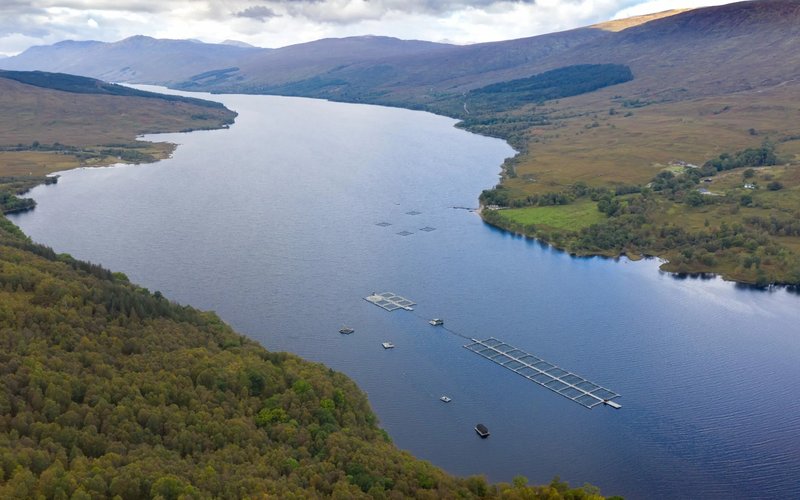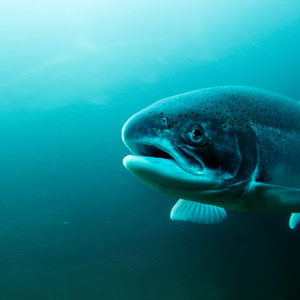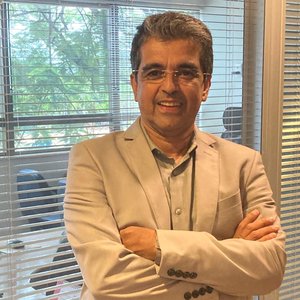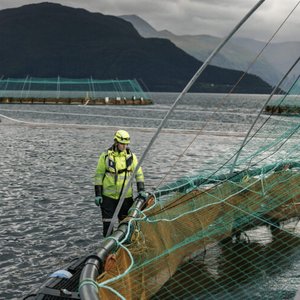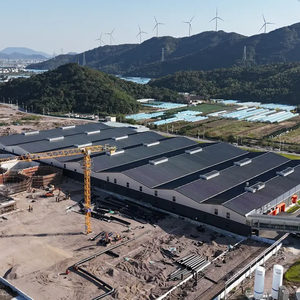A 37-year continuous independent water quality monitoring program found that salmon farming in freshwater lochs did not alter the nutrient status of the water body.
The study was carried out by Mowi Scotland at Loch Arkaig, where Mowi has farmed salmon for almost 40 years. Earlier this year, the company announced that it would no longer be farming salmon at Loch Arkaig and now the company has compiled a report based on continuous water quality monitoring, which commenced in 1987 at this location, to better understand the impact of the operation of the fish farm.
“With the recent closure of our Loch Arkaig fish farm, it is only right to look back on our operations extending to almost 40 years, with a particular focus on the nutrient status of the water body, to better understand any potential impact from salmon farming,” Stephen MacIntyre, head of Environment at Mowi Scotland, explained.
“The data set, which extends for 37 years, shows that the geometric mean for phosphorus levels in Loch Arkaig has remained stable and within its trophic status. While phosphorus level is the principal nutrient controlling the nutrient status of the loch, its values vary throughout the year due to land management in the catchment and rainfall levels. It is therefore important to invest in monthly sampling and establish a long-running data set to establish a geometric mean. Loch Arkaig has been officially classified by SEPA as a water body of High Ecological status. This means that the water at Loch Arkaig is unaffected or virtually unaffected by human activity.”
Water quality monitoring
Over the past 37 years, water samples have been taken regularly from Loch Arkaig by a team from the University of Stirling. These water samples were then analyzed in the lab. The aim of the monitoring is to assess the nutrient status of the water body to ensure there is no change in ecological status, with the key parameters analyzed including total phosphorus (TP) and chlorophyll-a (Chl-a).
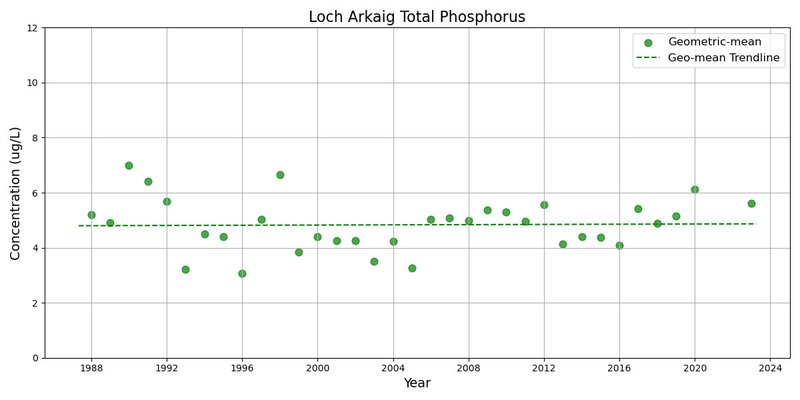
Total phosphorus sample data for Loch Arkaig since 1987 showing the annual geometric mean has remained constant.
This continuous water quality monitoring program is not unique to Loch Arkaig. This research is also being undertaken at Mowi’s freshwater farms at Loch Ness, Loch Lochy, Loch Garry, Loch Shiel and Loch Awe. The data is similarly used to monitor and track the nutrient status of these water bodies.
Stephen MacIntyre said that “Mowi’s continuous water quality monitoring program is another example of Mowi leading the Blue Revolution. We are committed to farming salmon sustainably and, in addition to complying with all regulatory standards and conservation thresholds, we often go beyond our regulatory requirements by carrying out additional environmental studies to examine and understand our interactions with the water environments and habitats with which we coexist. Ultimately, we rely on a healthy water environment to rear heathy salmon.”
The scope of the water quality monitoring studies has been enhanced with additional monitoring requirements introduced to support Mowi’s farming accreditations under the Aquaculture Stewardship Council, which recently changed its requirements on water quality as part of the new Farm Standard due to launch this year. The long-term environmental data sets being generated from Mowi’s freshwater lochs will provide unique scientific value.
These findings on freshwater quality follow Mowi’s groundbreaking study in 2024, when a three-year post-closure environmental study was conducted around Mowi’s former Isle of Ewe fish farm on the north west coast of Scotland. The study provided evidence that seabeds can recover upon cessation of fish farming operations.


